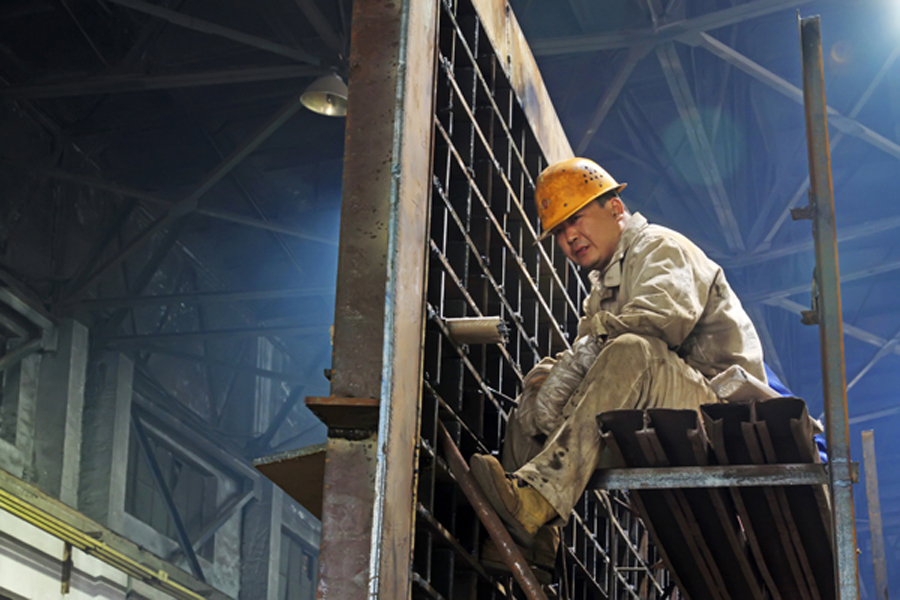
By Clyde Russell
The relentless climb in China’s port inventories of iron ore may not be as worrying to the market as they appear, more a reflection of a change in dynamics than anything else.
Port stockpiles stood at 158.6 million tonnes of the steelmaking ingredient as of the end of last week, close to the prior week’s record of 159.1 million, according to data from consultancy SteelHome.
That’s up from 148 million tonnes at the end of last year, and almost double the 79 million-tonne starting point of the climb in June 2016.
Journalists love comparative superlatives and in recent weeks Reuters has described the inventories as enough to build Australia’s Harbour Bridge almost 1,900 times over or Paris’s Eiffel Tower 19,000 times, even to construct enough cars to reach from Earth to Moon if lined up nose to tail.
There’s nothing inherently wrong with using such comparisons as they are eye-catching and give readers an idea of how much iron ore is piled up at Chinese ports.
But just because something is big doesn’t necessarily mean it is creating a proportionately sized problem.
This may well be the case with China’s iron ore inventories, which at first glance look large enough to cause an overhang of supply in the world’s top steelmaker.
Probably more important than the overall size of the stockpile, however, is the composition of the iron ore grades contained within it.

China’s iron ore market is becoming increasingly bifurcated, with stronger demand for higher grades and weaker demand for the lower grades.
This is a logical function of Beijing’s push to lower air pollution, as higher-grade ores require less coking coal in the blast furnace, and also don’t require the pre-blast furnace upgrading needed if a steel mill is using lower grade ore.
There isn’t a breakdown of the quality of iron ore in the port inventory data, but the market view is that much of the rapid growth in stockpiles over the past year has been in lower grades, such as ore with 58 percent iron content or less.
The build-up of lower grade iron ore at Chinese ports obviously has an impact on miners supplying these grades, but it has less of an impact on import volumes.
ANZ Banking Group said in a research note last month that what it termed the “effective” stockpile is closer to 100 million tonnes.
If that is an accurate assessment, it means the iron ore mountain at Chinese ports isn’t as daunting as it seems.
LOWER GRADE DISCOUNT
Certainly, lower grade iron ore has been trading at a fairly wide discount to higher grades.
The spot price in China of iron ore with 62 percent iron <.IO62-CNO=MB>, as assessed by Metal Bulletin, ended at $68.78 a tonne on Tuesday. The assessment for the 58 percent grade <.IO58-CNO=MB> was at $40.36 a tonne.
This makes the lower grade ore about 41 percent cheaper, and this has widened from the 29 percent gap that prevailed at the end of 2016.
The issue for exporters of lower grade iron ore, such as India and Australia’s Fortescue Metals Group, is that they are now at a disadvantage to producers of higher-quality material.
They are having to accept lower prices for their product, while also facing demand pressures as Chinese steel mills continue to operate under production constraints as part of anti-pollution measures.
For miners with higher-quality ores, though, including Australia’s Rio Tinto and BHP Billiton, Brazil’s Vale, and South Africa’s Kumba, the rise in inventories is not much of a concern, given the Chinese are still demanding their product.
How is the situation likely to resolve itself over the next few months?
One way of clearing the inventory overhang would be for China’s pollution restrictions to ease, allowing steel mills to use the lower grade ore, but this is far from a given as there are increasing signs that winter restrictions are being extended in several steel-producing regions.
The other would be for the discount of the lower grade ore to continue widening, and for owners of the existing stockpiles to be forced into accepting heavy losses.
(Editing by Tom Hogue)